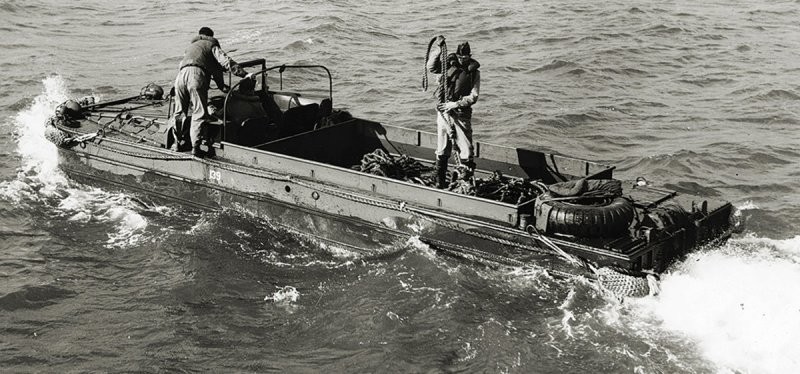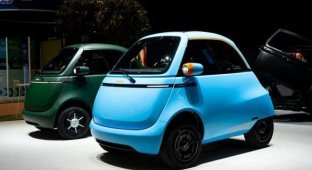GMC DUKW amphibious truck: a workhorse for transporting troops and supplies (17 photos)
Built by General Motors from 1942 to 1945, the DUKW was a six-wheeled amphibious truck. The military used the utility vehicle to transport troops and supplies both by water and by land. 
The car that today's post is dedicated to is so unusual that it is difficult to give it any one definition. Of course, you can call this a car in its full sense; it has an engine, a gearbox with a transfer case, a steering wheel and three axles. They are all leaders.
At the same time, this device could not only drive on land, but also float (walk, for whom this is important) through the water, thanks to the propeller. It's like a boat that can take itself to the river. GMC DUKW. 
The history of the creation of this “Duck”, this is how the Americans nicknamed the amphibian, which is logical because DUKW is consonant with Duck, which means duck, goes back to the early 1940s. The Second World War was already going on in the world, and the American troops, who had not yet participated in it, thought that it would be nice to have transport that could travel along the road and could sail from the ship to the shore under its own power.
The technical specifications for the construction of such a vehicle were apparently also abstract and very abstract, so the military did not like the first running prototypes of the amphibian. Even the further need to develop an amphibian was called into question, but they decided to continue the project, hoping that even if such a machine was not suitable for the military, it could be useful, for example, for rescuers.
GMC CCKW-353 
Several companies were involved in the development of waterfowl vehicles, but of them only General Motors had a cargo version. The GMC CCKW-353 all-wheel drive truck was taken as a basis, from which even the frame was transferred to the amphibian.
Yes, one of the amazing things about this design is that it is framed, which is unusual for amphibians, where engineers are fighting for every kilogram of weight saved.
The “Ducks” boat was built around a frame and axles, the tires of which became single-pitch, and a tire pressure regulation system was added, for which the amphibian was equipped with a compressor. The base truck did not have this feature. 
It was not motorists who worked on the creation of the hull, but real shipbuilders, the New York company Sparkman and Stephen, which was engaged in the development and construction of yachts, boats and other small vessels.
The boat part of the amphibian was made like a pontoon, which had two floats, one in front, in the form of an engine compartment, the second in the stern. Most of the body is made of thin steel sheet about 2 mm thick; square and rectangular pipes were used as amplifiers. 

Let me remind you that the design is based on a strong truck frame, so the hull does not experience heavy loads; its main task is to maintain buoyancy. The vehicle's carrying capacity on water reached 3500 kg, on land it was noticeably less, about 2450 kg. Own weight 6500 kg.
A few words about the layout. 
The engine remains at the front, a six-cylinder GMC 270ci rated at 95 hp, a five-speed gearbox with a sophisticated shift pattern and a two-speed transfer case. The propeller shaft drive is belt driven, from the power take-off. The maximum speed on land is 80 km/h with a fuel reserve of 350 km, on water 10 km/h with a fuel reserve of 80 km. 


Despite the initial skepticism, the military nevertheless became interested in this amphibian, forming the purposes of its use and the approximate conditions in which it had to work. Transporting cargo and people from landing ships to the shore, with waves up to three meters high, required high sides (585 mm at the highest point on the bow) and high-performance pumps to pump out water. By the way, there were two pumps, one of them was gear-type.
On this example they were not preserved, however, like the bottom, which now has a panoramic view. So this amphibian is unlikely to swim anywhere, but nothing prevents it from moving around. All systems are in working order, you can even connect a propeller, it will only drive air. 
Over the three years of production of the GMC DUKW (from 1942 to 1945), more than 20 thousand copies were assembled, this car is already one of the last ones, from 1945, so it has no military history, but it has historical value, because of the entire circulation it is not so There are already many of these “Ducks” left. The body, made of thin, cheap steel sheet, quickly turned into dust, but this is not the manufacturer’s fault. Durability was never mentioned as even a secondary goal in the design of this machine. 



























